The emotional rollercoaster of a baby animal safari
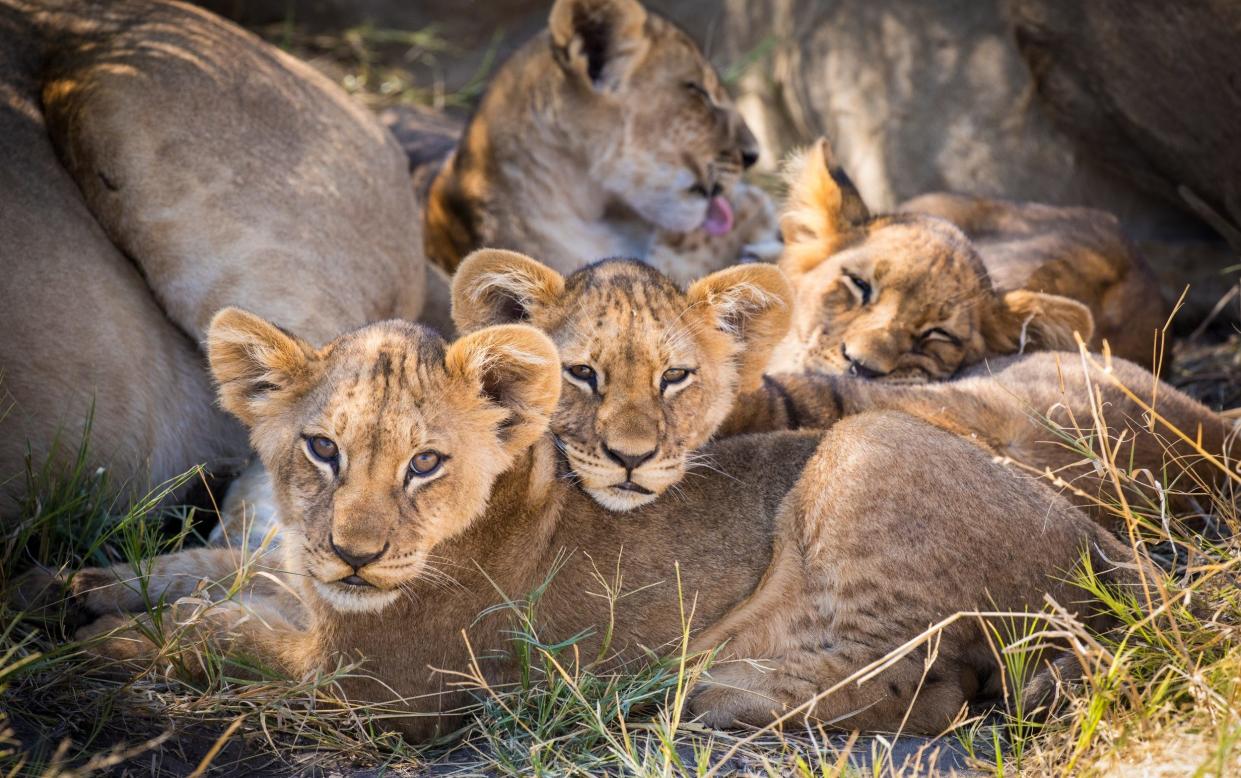
“Over there, two lions doing what lions do best. Snoozing” said our guide, pointing at a lioness stretched out under a Kalahari apple-leaf tree. Eyes closed, legs sprawled, tail flicking from side to side. Close by her, cubs were cuffing each other lazily. Grabbing my camera, the words “utterly adorable” sprung to mind until, a few yards away, I spotted a baby giraffe, also stretched out on its side, but with two more lions gnawing hungrily at its ribs.
It was typical of the particular frisson you get during November in the Botswana bush. It’s the season when many of the herbivores produce their young, and the meat-eaters know it. A great opportunity to see the baby animals at their most engaging – as long as you realise that a fair number of them will end up at the wrong end of a kill.
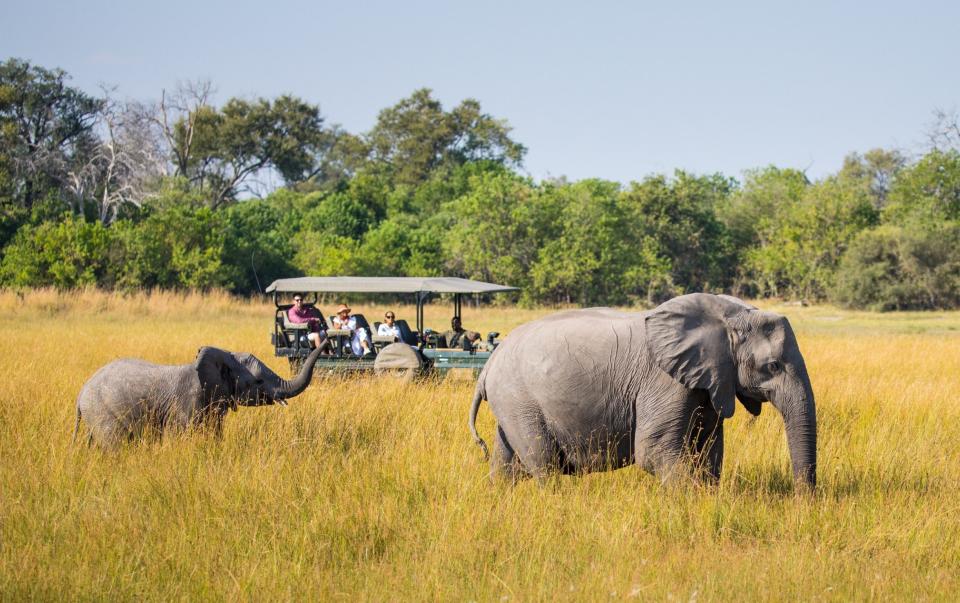
November is also one of quietest times of year when it comes to tourism. Our summer is winter in sub-equatorial Africa and is the busiest for safaris. It’s the dry season, when the animals tend to gather around diminishing water holes and are therefore easier to spot, and it coincides with peak holiday time for families. In September and October, spring is in the air, with temperatures and humidity beginning to rise as the more unpredictable rainy season approaches. And so November is normally the time that the safari camps take a breather and gear down for a quieter spell before the Christmas rush.

However, the Botswana spring is also a magical period which sees the bush transition from the parched, dusty winter months to the lush fertility of summer, flushing green as the leaves of the mopane trees start to unfurl and the spectacular flamboyant tree adds a bright-red splash to the landscape. Exotic flowers, crimson fireball lilies, white bauhinia, aromatic wild honeysuckle, bright purple jacaranda and delicately yellow frangipani, bloom around the camps – and the jeep tracks are perfumed with the pungent scent of wild sage.
And it isn’t just about the flowers and the animals. Because it’s spring, the birds are also at their most active. I spotted plenty of summer migrants, including the carmine bee-eaters, with their spectacular colouring and distinctively long tail feathers, as well as resident weaver birds perfecting their exquisitely crafted, communal nests on the branches of acacia trees.
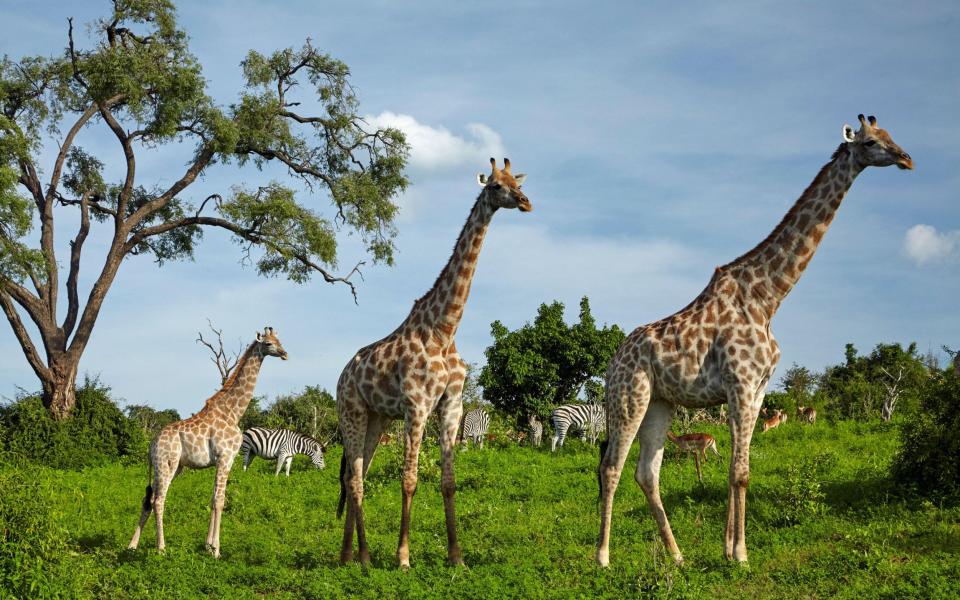
Egyptian geese, great white pelicans, blue helmeted guinea fowl and the comical long-necked African darter bird dabbled on the water’s edge, and from time to time I caught the emerald flash of a Burchell’s starling or the luminous blue of a woodland kingfisher in flight. My excursions into bush echoed with the ringing call of the blacksmith lapwings and the “glug-glug” of the coppery-tailed coucals – and there wasn’t much peace at night either, a cacophony of courting cicadas and mating bull frogs echoed around the swampy reed beds.
Even the bush floor was full of activity. Alongside the drama of big animal spotting, some of my most fascinating moments were spent watching dung beetles pincering their giant balls of muck into shape, before rolling them through the hordes of tiny, scuttling red velvet mites, and past sleepy leopard tortoises emerging from hibernation, in an effort to impress a potential mate.
My plan was to explore this fertile and fecund season in north-west Botswana’s Okavango Delta region from some of its most remote bases, namely Selinda Camp, Duba Plains Camp and newly opened Sitatunga Private Island, all stylishly comfortable eco-camps – part of Great Plains Conservation – which are scattered across some of the richest habitats for elephant, lion, hippo, leopard and cape buffalo.
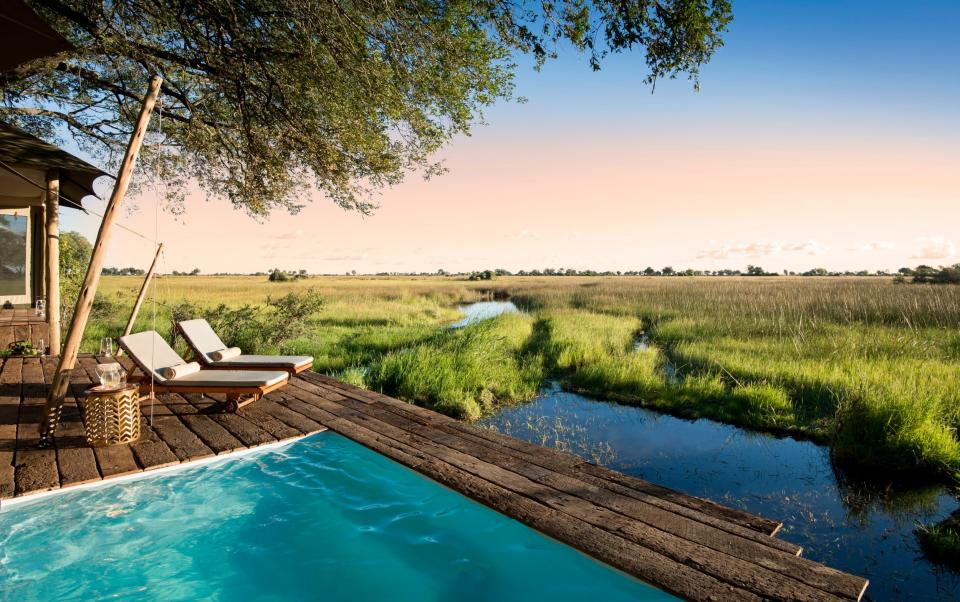
Each camp offered different types of drives and sightseeing, but the sense of drama and suspense was common to them all. From the hyena, lurking in its burrow waiting for an unsuspecting antelope calf to separate from its mother, to the unblinking eye of a crocodile lying log-like in the shallows on the lookout for prey. And from a jackal waiting patiently for its turn to feast on a rotting carcass to an eagle flying low in search of unsuspecting rodents. Most thrillingly, we spotted a leopard which became almost completely camouflaged as it silently merged into the tall grasses.
But by far my most chilling encounter was the vultures, which began to cluster next to our jeep and as close as they dared to the lioness and her cubs. They were watching the lions have their fill of the baby giraffe as silently, motionlessly and intently as we were, but with lunch rather than photography on their minds.

How to explore Botswana
By Jeep
Remote and beautiful, the Selinda Spillway is a channel of water connecting the northern Okavango Delta to the Linyanti and Chobe rivers, which teems with wildlife. Within minutes of driving from Selinda Camp, we saw family pods of basking hippos wallowing in the shallows while bull elephants, mothers and calves as young as two or three weeks paddled along the water’s edge.
In the scrubby grassland, impala antelopes grazed alongside their long-legged, bambi-eyed offspring, while horned tsessebe, among the fastest animals in the bush, stayed close to their gangly, sandy-coloured young. Troops of baboons and vervet monkeys stalked through the scrubby plain with babies tightly gripped to their chests and warthog piglets cavorted around their bristly and tusked mothers who, although far from conventional beauties themselves, certainly produced some of the most cute and captivating offspring I saw, with their snubby snouts and flapped-back ears.
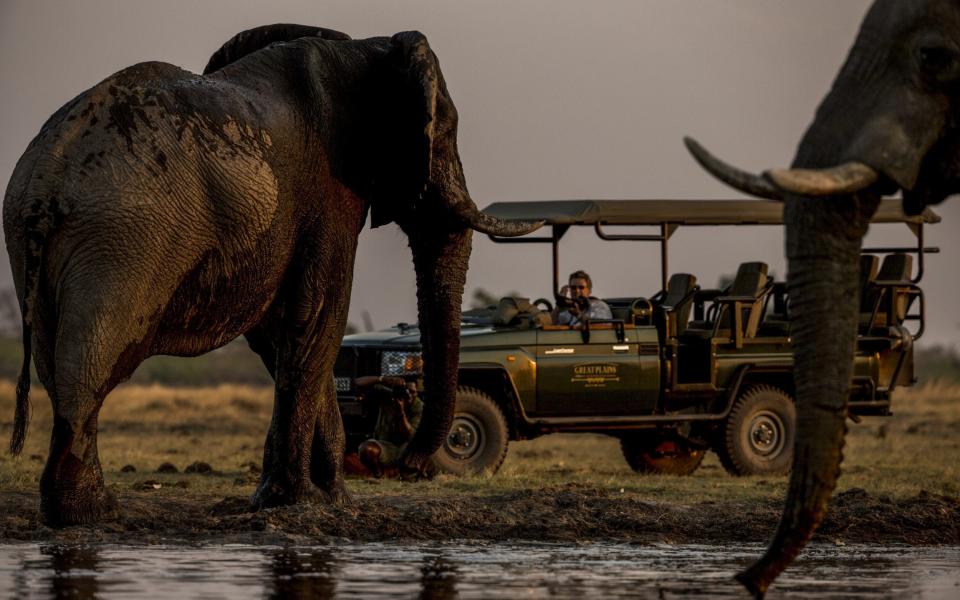
By helicopter
A 10-minute trip by air in a small, four-person helicopter from Duba Plains proved to be an excellent way to get a feel for the enormity of the region, a sense of space that you can’t fully appreciate on land. And, from above, it also becomes crystal clear why the area is described as a panhandle as the Okavango river channels into the region from the far-off highlands of Angola before branching out in long tendrils, which flood in a pan shape over the land.
The swampy green landscape was criss-crossed with hippo paths, glittering like snail trails, and we swooped low over elephants as they plodded along their well-trodden routes, past white termite mounds so large they could be seen from the air. One of the most astonishing moments was dipping over a herd of Cape buffalo, close enough to make out their dark bulk and formidable curving horns.
On foot
A 40-minute boat trip along the Okavango from Sitatunga, its banks edged by papyrus and reed beds, took us to a disembarkation point on a small island, where we followed our guide quietly and in single file past sausage trees, fever berry groves and outcrops of elephant palm.
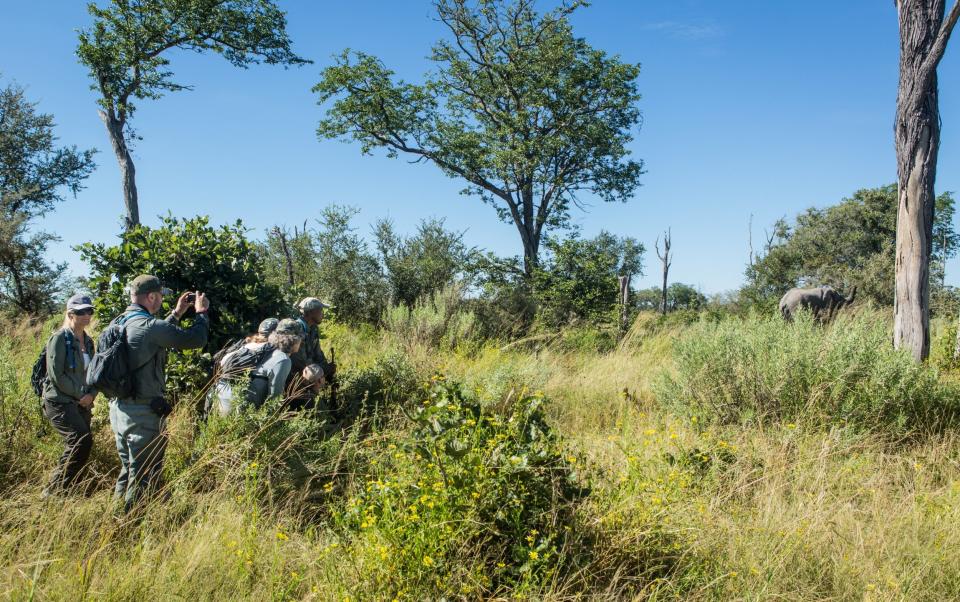
Pointing out the centuries-old baobab trees, and clumps of milkweed, home to fluttering African monarch butterflies, our guide showed us how to identify hippo and antelope tracks in the sand and explained how elephant dung contained berries which would be rich pickings for baboons while hyena dung, tinged white from scavenged bones, created calcium-rich food for tortoises. Traced in the dust were trials made by puff adders and he showed us holes in the river bank which were home to water monitor lizards.
Essentials
Cazenove+loyd (020 7384 2332; cazloyd.com) offers tailor-made travel to Botswana, with a six-night stay at Selinda Camp, Duba Plains Camp and Sitatunga Private Island (two nights in each camp) from £9,860 all-inclusive, with private transfers, based on two sharing. A two-night add-on at Mpala Jena Camp in Zimbabwe (for Victoria Falls) starts at £2,200. You can fly from London to Johannesburg or Cape Town with British Airways (ba.com) from £714 return.

